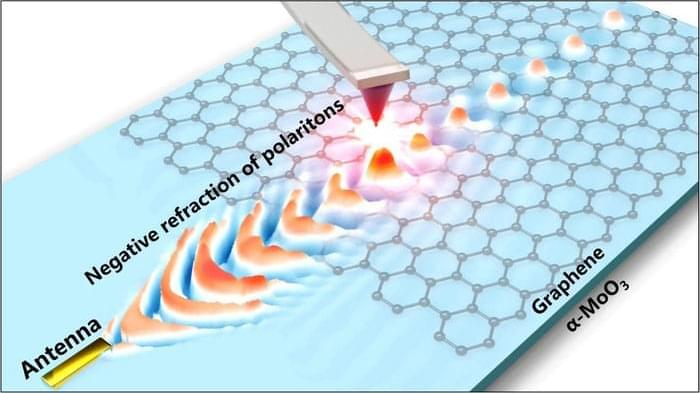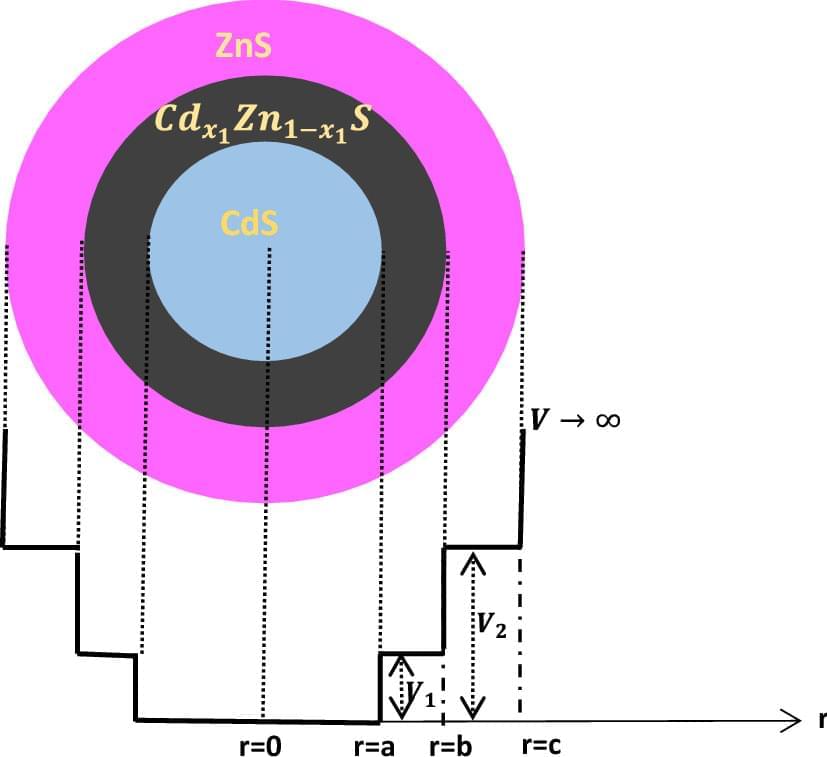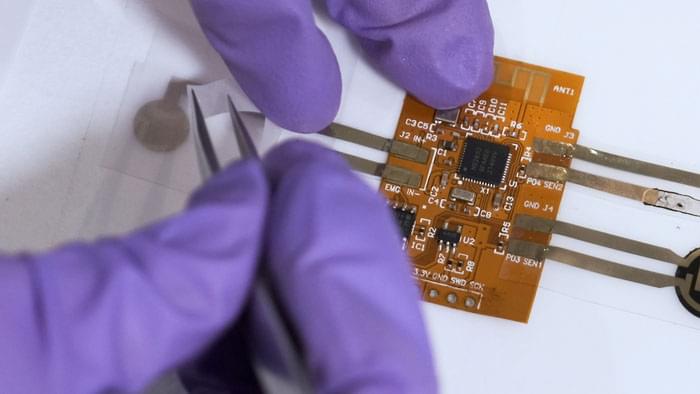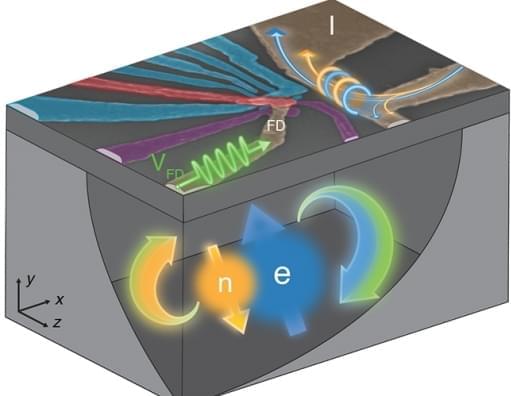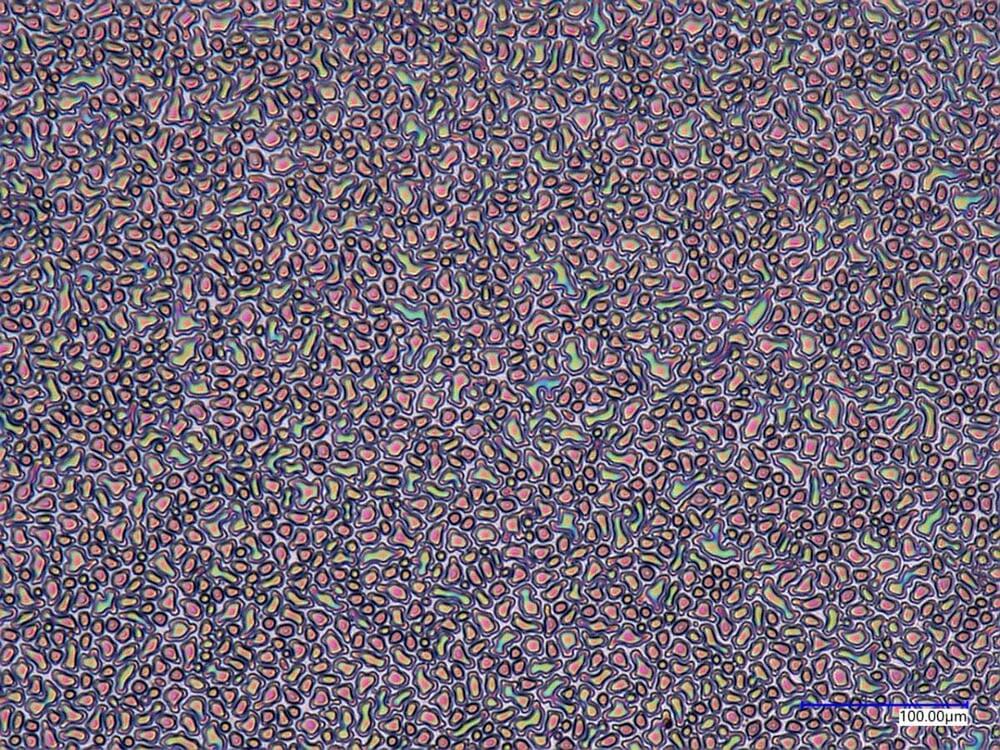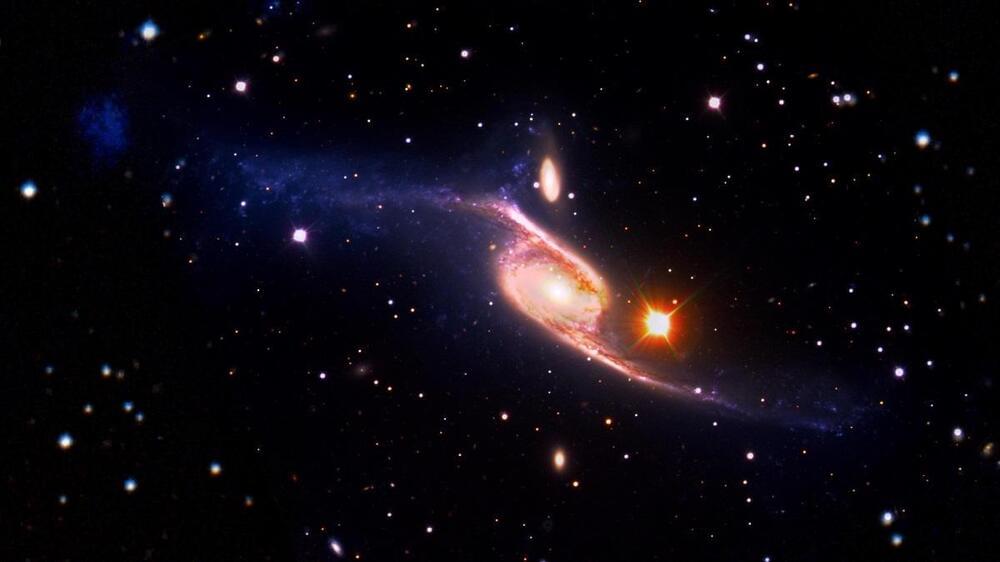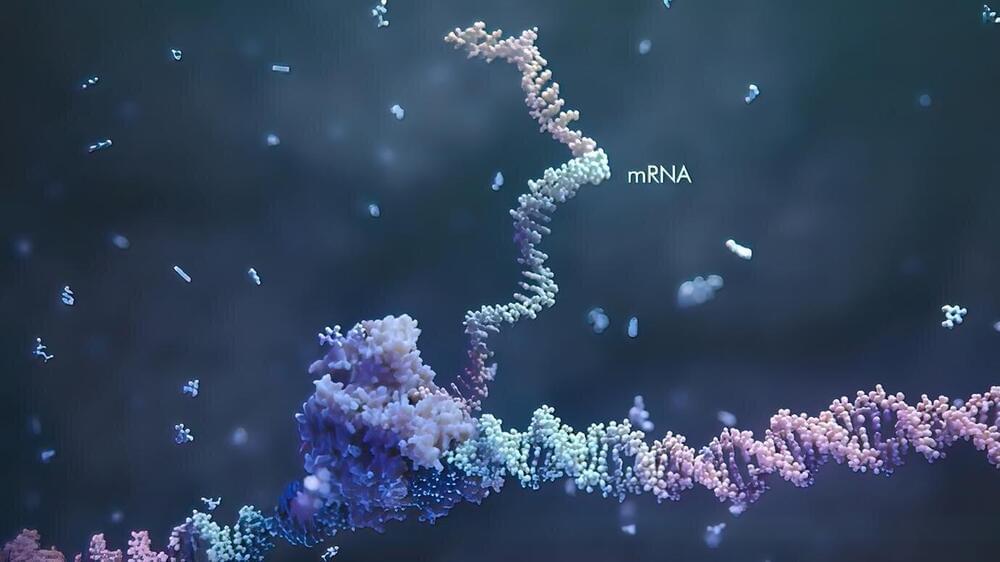A new study led by DAI Qing’s team from the National Center for Nanoscience and Technology (NCNST) of the Chinese Academy of Sciences (CAS) and Javier Abajo from the Institute of Photonic Sciences (ICFO) in Spain has shown a gate-tunable nanoscale negative refraction of polaritons in the mid-infrared range through a van der Waals heterostructure of graphene and molybdenum trioxide. The atomically thick heterostructures weaken scattering losses at the interface while enabling an actively tunable transition of normal to negative refraction through electrical gating.
The work was published in Science (“Gate-tunable negative refraction of mid-infrared polaritons”).
Basic principle of the “polariton transistor”. The van der Waals heterostructure is constructed by decorating graphene on the molybdenum trioxide, and the antenna stimulates the polariton to transmit through the interface to form negative refraction. (Image: DAI Qing et al.)
